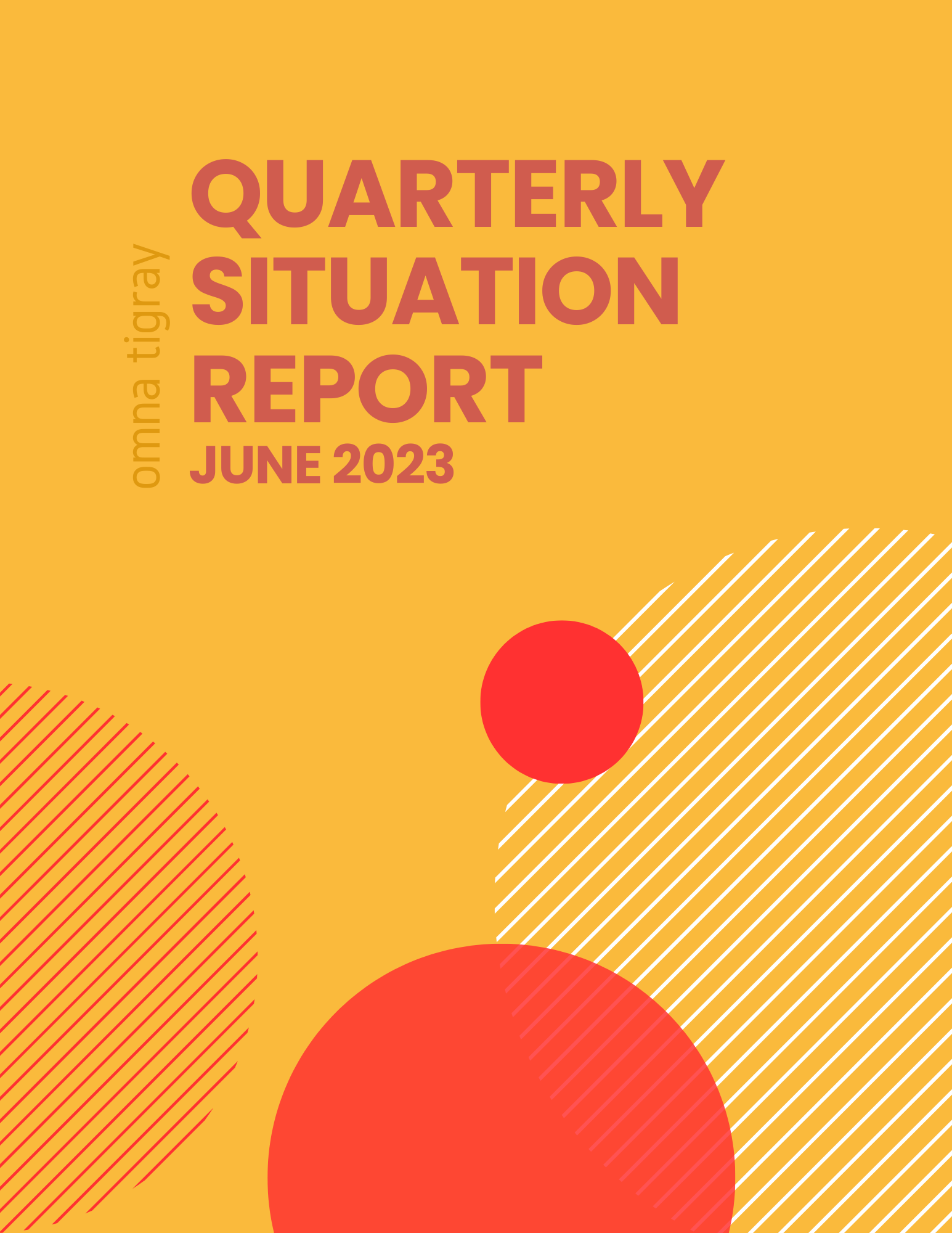EXECUTIVE SUMMARY
The humanitarian crisis in Tigray, Ethiopia, has been caused by one of the most devastating conflicts in modern history. Marked by genocide, famine, and mass displacement, it has unfolded largely in the shadow of global silence. Despite the signing of a cessation of hostilities agreement (CoHA) in November 2022, the situation remains dire, with continued instability, restricted humanitarian access, and ongoing human rights abuses and illegal occupation of Tigrayan territories. Recent statements from Ethiopian Prime Minister Abiy Ahmed signal an alarming escalation of genocidal rhetoric, making it clear that Tigray’s suffering is far from over. To make matters worse, internal divisions within Tigray’s political leadership are exacerbating the crisis, deepening the suffering of civilians who remain trapped in an unrelenting cycle of violence and deprivation.
The Tigrayan people have endured relentless suffering. It is estimated that hundreds of thousands have been killed due to direct violence, famine, and lack of medical care. Systematic starvation has been used as a weapon of war, with humanitarian aid deliberately obstructed and withheld to push Tigrayans toward the brink of extermination. Reports of mass conflict-related sexual violence, extrajudicial killings, enforced disappearances, and forced displacement continue to emerge, painting a horrifying picture of ethnic cleansing and genocide. Despite the CoHA, Tigray remains under siege. Eritrean and Amhara forces continue to occupy large parts of the region, perpetuating violence and preventing displaced persons from returning home. Infrastructure is in ruins—hospitals, schools, and roads lie in a state of devastation, with little to no reconstruction efforts underway. The Ethiopian government’s refusal to hold perpetrators accountable further erodes trust in any potential peace process.
Recent remarks by Prime Minister Abiy Ahmed have only deepened fears of continued atrocities. His rhetoric has dangerously escalated, calling for the elimination of his political opponents in language disturbingly reminiscent of historical genocides. Such statements, in addition to an uptick in arrests of
Tigrayans outside of Tigray, serve as both a call to arms and an indication that the Ethiopian government has no real intention of securing peace for Tigray. Compounding these external threats is the worsening internal political crisis within Tigray itself. Divisions among the Tigrayan leadership have led to governance paralysis, internal power struggles, and disillusionment among the people. Rather than focusing on unity, rebuilding, and protecting the people’s interests, including ensuring Tigray’s territorial integrity and the return of the hundreds of thousands of internally displaced persons (IDPs), factional disputes have created additional layers of instability, leaving civilians even more vulnerable. With trust in political institutions eroding, the suffering of ordinary Tigrayans is being prolonged not only by external aggression but also by internal disarray.
The international community’s response and its mechanisms for accountability and monitoring have been largely inadequate. Unlike other global crises that have prompted swift and large-scale action, Tigray has been met with hesitation, muted condemnations, and insufficient humanitarian efforts. While some countries have imposed limited sanctions and restrictions, they fall woefully short of the decisive action required to halt the ongoing genocide. Many of the soft-power tools employed to hold Ethiopia accountable for the crimes being committed in Tigray have been rolled back, with global institutions, like the World Bank, returning to the status quo. This selective approach to human suffering exposes deep-seated racial and geopolitical biases, illustrating whose lives are deemed worthy of saving. Without an international recommitment to hold Ethiopia accountable for implementing the CoHA and its atrocity crimes past and present, the silent genocide of Tigrayans will continue.












